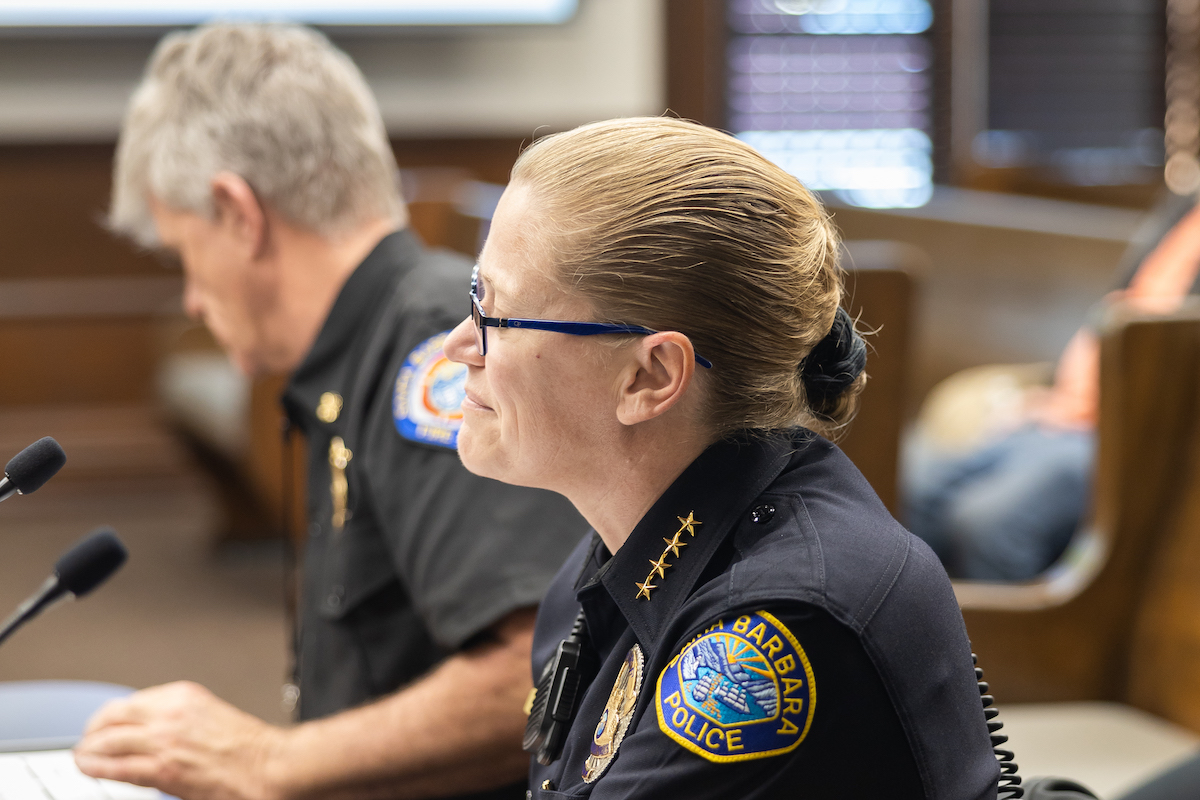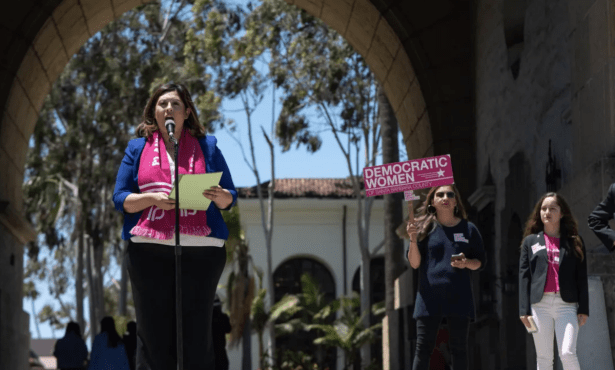City of Santa Barbara Gains New Mental Health Patrol — Almost
Co-Response Team Added to City Police, but Will State Law Undermine It

The good news, at least according to Santa Barbara’s Police Chief Kelly Gordon, is named Officer Rocio Lopez, a city cop since 2016 who has been assigned to the department’s second co-response team, which should allow co-response patrols to be posted on the streets seven days a week for the first time ever.
To the extent anything resembling a magic wand has yet been devised to divert those with serious mental illnesses from the quagmire of the criminal justice system, it’s been the co-response approach. This is the practice of teaming law enforcement officers, such as Lopez, with clinical mental health professionals to respond when the police department receives mental-health-related calls for service.
In the first nine months of last year, the Santa Barbara County Sheriff’s Office joint program with the Department of Behavioral Wellness responded to 1,081 calls involving mental health issues. These resulted in only 47 arrests and took one response team only 66 minutes to defuse the situation. In contrast, the average mental-health crisis response from deputies working alone in the field took 122 minutes and three response units. Such impressive statistics underscore why the South Coast Chamber of Commerce gave the county program the Innovator of the Year Award.
Since 2020, the Santa Barbara Police Department has had only one co-response team working only four days a week to handle 1,300 mental-health distress calls. Officer Lopez — an Oxnard native who had been working the Major Crimes Against Persons detail before being assigned to this new team in September — put the need for co-response teams more granularly. Shortly before she joined the co-response unit, a potential suicidal jumper had scaled the walls of the County Courthouse. Police were almost immediately on the scene, but it took the county’s mobile crisis clinician about 45 minutes to get there. The event happened on a Friday after the city’s only co-response team had ended its weekly shift on Thursday. Now, with an additional team, the clinician would have been there with the police and, in a few minutes, been able to access the county’s mental health file on the man sitting precariously above the Courthouse archway.
The bad news, however, is that the county’s Department of Behavioral Wellness has yet to find a clinician with whom Lopez can be teamed. It’s not a matter of money; Chief Gordon has reportedly secured the federal funds necessary to cover the clinician’s salary. But the Department of Behavioral Wellness — like many throughout the state — has been plagued by high turnover and vacancy rates.
Chief Gordon is hoping to rattle a few cages — politely — during this week’s Fire and Police Commission meeting in hopes of finding Lopez a clinical partner, bringing the city’s co-response detail up to full strength. In a prepared statement, Gordon observed how co-response teams — at both the city and county levels — have markedly decreased the number of mentally ill people arrested by officers, “ultimately saving lives and improving outcomes for those in crisis.”
Naturally, as with anything related to the convoluted system of mental health care in the United States, there is even more bad news. Chief Gordon will soon have to confront new state mandates that will financially punish mental-health crisis teams that include law enforcement personnel such as the ones in Santa Barbara at the county and city levels. The state’s Department of Health Care Services concluded that “not including law enforcement officers” when dispatching mobile crisis teams “is considered a national best practice.” Teams that include law enforcement personnel, the state ruled, will not be eligible for financial reimbursements through Medi-Cal — which will be available for the first time next January 1 — but teams without law enforcement will.
The new mandates, inspired by political currents intensified in the aftermath of the George Floyd murder, pits what might sound good in theory (police should not be the first responders to those in mental health crisis) against what has worked well in practice in Santa Barbara (law enforcement playing an active role in reducing the criminalization of mentally ill people). It will be up to the Department of Behavioral Wellness to hammer out the details. The first glimpse of their handiwork will take place in mid-December, right before the new state rules go into effect.



